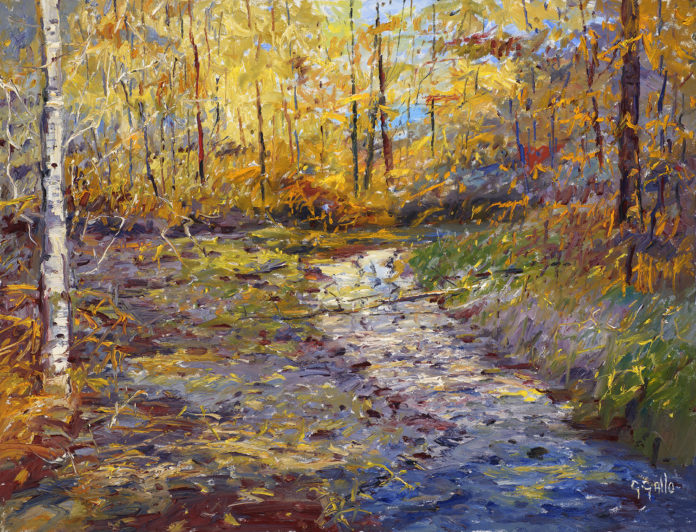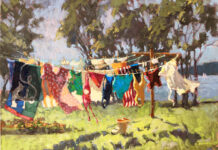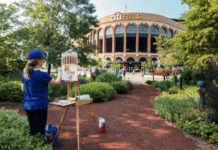Need art inspiration? Start here > learn what the masters had in common, one of the best things you can do for yourself and your art, and more.
Art Inspiration: Finding Your Own Voice
BY GEORGE GALLO
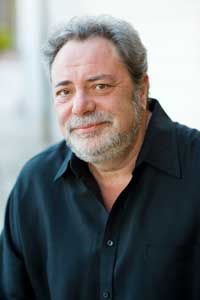
Too many representational paintings today look the same. When I walk into a gallery I sometimes feel as if many of the artists’ signatures could all be interchangeable. For representational art to move forward, we must not hide from, but instead embrace our own unique voices.
I am very much a history buff when it comes to American Impressionism. I’ve read endless articles and books about various painters, their influences, and with whom they studied.
This chain of student painters studying under older masters was nearly broken in the twentieth century when art schools adopted the notion that painting anything representational was no longer relevant. Of course this was an absurd idea. Many artists at the time, along with much of the public, still had an extreme interest in this type of art.
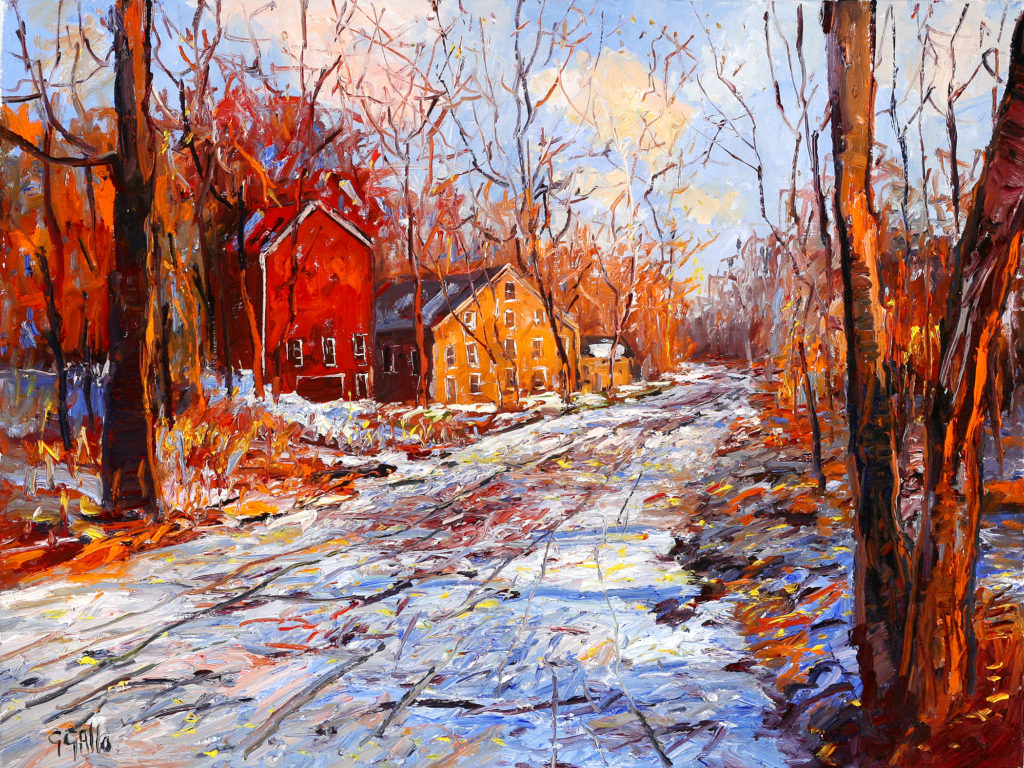
Today representational painting is making a big comeback, and I think it can rebound back to its place of former glory if talented men and women treat it seriously. My major concern is that I see many talented artists painting works that seem too safe—paintings that will sell, rather than paintings that truly express their inner voice.
If one looks at the American impressionists/realist masters of the past (Chase, Twachtman, Redfield, Garber, Symons, Wendt, et al.), their unique way of seeing the world around them can be spotted instantly. They were not afraid of being uniquely and solely themselves. A Redfield looks like a Redfield, a Symons like a Symons. This is quite an accomplishment, especially when you consider that they were all painting the same subject matter, sometimes side by side. I’m not saying that one should develop a “style” just to be different. That would be an appliance to vision as opposed to allowing it to happen naturally.
How did these great artists find their own voices? They did it by trying to arrive at the truth. In their writings they admit that some of their efforts were clumsy. But even their clumsy efforts are far more interesting than their overly slick counterparts.
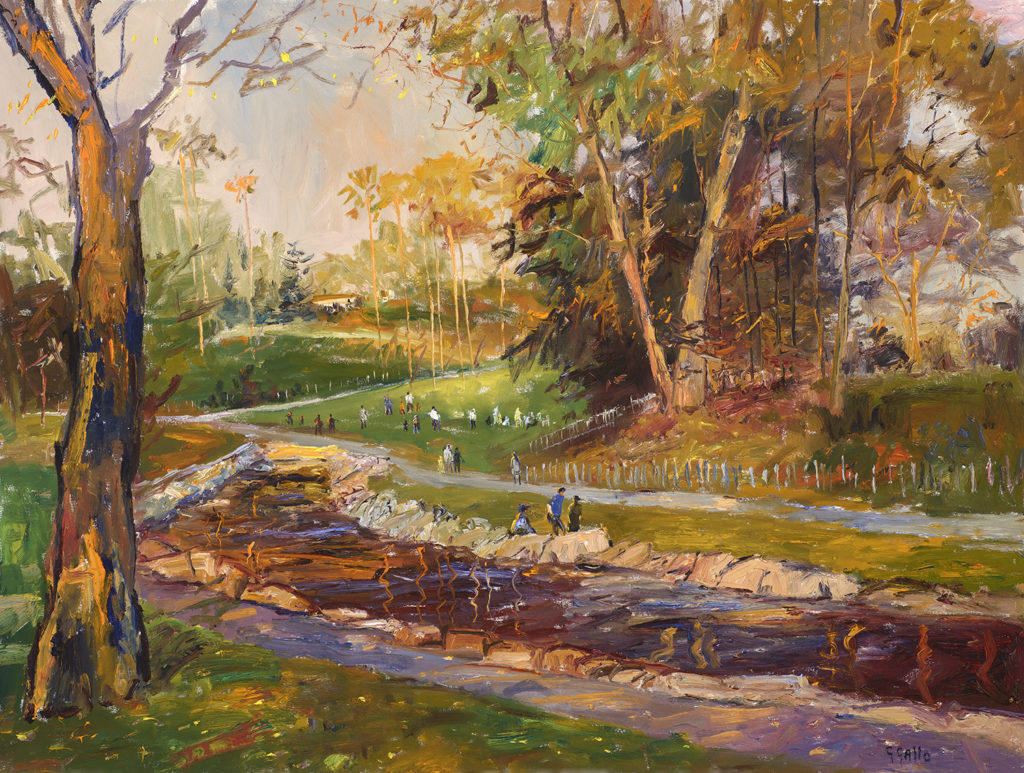
Painting from life was one of the things these masters had in common. All of them also painted very large canvases outdoors. They did this for many reasons, one of which I’m sure is that large paintings just look impressive. But more importantly, they actually did it in part to lose control.
Redfield was especially aware of this Zen-like approach to art. He felt he did his best work when he was actually “chasing” the painting, not completely sure of its ultimate outcome, but solving problems as he went. I have adopted this practice, painting canvases en plein air as large as 48×60 in one go.
While this might sound daunting at first (and at times it is), the one thing this practice affords is not having time on your side to screw up what you’re doing. Because the light changes quickly, you have to move at breakneck speed and rapidly put down what you see. You also have to trust that what you’re doing is right and continue pushing forward without aimlessly daubing away at it. As you work at this pace, an amazing set of circumstances begins to unfold.
First off, you will find yourself developing shorthand that is totally unique to you. Your unconscious mind will take over and allow you to put things down without judgment. I promise you, this act of surrendering to the painting—as opposed to trying to control every aspect of it—will be one of the best things you will ever do for yourself as an artist.
Nothing in life works well when one is trying to rigidly control all aspects of it. Art is no different. Once you give in and surrender to the work, it will take you places you never dreamed existed. Most importantly, in that act of surrender, you will find your unique voice. You will become far more interested in the act of painting as opposed to merely rendering the scene in front of you.
You will also find an interesting paradox. The more you let go, the more control you will actually have. Instead of stubbornly holding onto one thought, many options will appear as you work. Instead of you just commanding the painting to do what you want it to do, you will actually have a sort of dialogue with the painting.
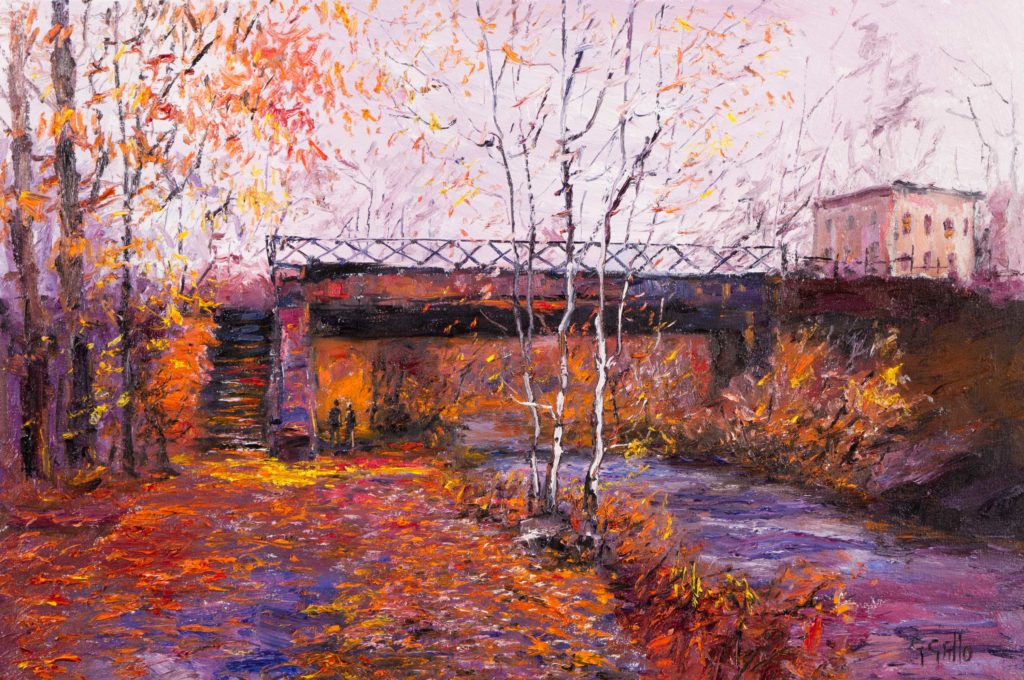
Imagine freely expressing shapes, colors, values and edges without that awful inner voice asking, “Is this good enough?” Or, “Is this well-drawn enough?” Emile Gruppe, one of the best landscape painters around, complained that too many of the younger painters he saw seemed far too concerned with showing off their drawing abilities. Drawing is essential, but it shouldn’t become a means to an end, especially when working in the medium of oil paints, which is all about painting masses.
Some may take pause in that statement. I am not advocating poor drawing. I am only saying is that if a painting relies merely on drawing for its success, there’s a good chance the piece is more about the ego of the artist rather than about his or her soul. There are great jazz musicians who can say more with a few notes in the right place than by playing every note their instruments can play in a few measures.
The art of George Gallo is in the permanent collection of The Butler Institute of Art. Connect with him at: www.georgegallo.co.uk.
Visit EricRhoads.com to find out all the amazing opportunities for artists through Streamline Publishing, including:
– Online art conferences such as Plein Air Live
– New video workshops for artists
– Incredible art retreats
– Educational and fun art conventions, and much more.
> Subscribe to Plein Air Today, a free newsletter for artists
> Subscribe to PleinAir Magazine so you never miss an issue

